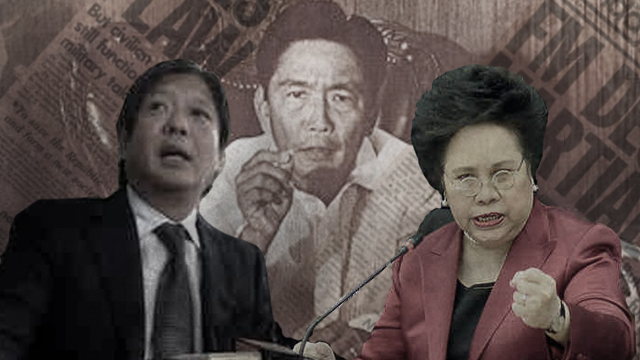![SOLDIERS. (L-R) SFC Christopher Shaw and SSG Jack Martin, killed-in-action in 2009. Source: US Department of Defense]()
September ambushes me every year.
Life rushes by, and then I realize it’s another September, and another difficult anniversary. I look down at the band on my wrist, the scuffed aluminum band that soldiers wear to commemorate the dead. You’ve probably seen these killed-in-action (KIA) bracelets before, but unless you know what it is, you can mistake it for simply a piece of jewelry.
The one on my wrist reads:
SFC Christopher Shaw
SSG Jack Martin
Jolo, PI 29 September 2009
The names are bracketed by a US flag on the left and the Special Forces insignia on the right: “De oppresso liber.” To free the oppressed. I’ve worn it every day since the small brown box of them arrived at our task force headquarters in early October 2009.
![]()
On September 29, it feels heavier than it does on every other day of the year. Every other day of the year, I am consumed by the chaos of my life: a young daughter, a new house, a small company. But on September 29, the luxury — the arrogance — of that chaos hits me: the things that chafe at me are so minor in the face of the fact that always hits home on September 29. Jack and Chris will never experience this life; they’ll never experience a life after the uniform.
When the lights go out
A lot of people ask me what war is like.
In truth, I saw more violence in Afghanistan working with the United States Agency for International Development (USAID) than during my time in the US Army. But those experiences share something in common. And what they share explains why Jack and Chris didn’t survive September 29, 2009.
War is entropy. One moment everything is fine; the next it isn’t. In Tim O’Brien’s iconic short story collection, The Things They Carried, there’s a scene depicting a soldier getting killed while taking a piss. “Zapped while zipping,” O’Brien called it. A sniper here and an IED there. Bang, and the lights go out.
I remember when I joined the Army. I was young and stupid and believed if I got enough training and surrounded myself with the best soldiers, I’d have the best chance of surviving. Now I know: that’s bullshit. You wake up some days, and everyone’s alive. Then you go to sleep, and some are dead. That’s it. That’s all there is.
Jack and Chris didn’t have to die
What bothers me most isn’t that Jack and Chris died. Everyone who signed on the line after 9/11 knew what could happen. No, what tears my insides up is that they didn’t have to die, that our task force got it wrong, and no matter what justification commanding officers give or what the official story says, this was a preventable mistake — and two men didn’t come home because of it.
It’s tough to speak in this way about a specific operation; it’s even harder to speak in this way when Special Operations forces are involved. We have reason to be proud of our special operators, but we have come to believe too deeply in the myth of their invincibility and infallibility. Part of that is psychological armor for ourselves: to believe such well-trained, well-equipped forces could be killed by barely trained guerilla fighters challenges the core of what we believe about American military might. But for those of us who have done the fighting and seen the killing, there’s a deep dishonesty in assuming that “Special Operations” are somehow impervious to the ordinary chaos of warfare.
To understand my disillusionment — and the disillusionment of others who served — you have to understand my context. After 9/11, the United States vowed to track down Al Qaeda no matter where it was hiding. Southeast Asia has two main Al Qaeda affiliates: Jemaah Islamiyah, headquartered in Indonesia; and the Abu Sayyaf Group (ASG) in the Philippines. The U.S. set up a small task force to work with the Philippine military to combat these terrorist groups.
In 2009, I took a 3-man psychological operations team to the southern Philippines to augment 1st Special Forces Group. Our role was to conduct influence operations by working at the community level: identify at-risk villages and figure out what issues were most important to them. Then we’d work with those communities to encourage the behaviors we wanted and, ideally, do our best to eliminate the gravitational pull of radicalization. We ran radio shows and hosted community gatherings, among other efforts.
![]()
My team conducted missions into these communities as much as any team on Sulu Island. We often walked around with only our 9mm pistols and no body armor, in an effort to avoid looking like commandos who were there to cause trouble. We talked with farmers, shopkeepers, students and imams, trying to figure out exactly how we could move these communities in the right direction.
The only problem: none of us, from my commander on down, had any idea what the right direction was. And to make matters worse, we were all operating in silos, accomplishing our individual missions without any regard for the broader work we had to do. The Special Forces guys, for instance, mostly trained the Armed Forces of the Philippines (AFP) Marines in infantry tactics. My team worked with local communities. The Civil Affairs team did infrastructure projects around the island. But there was nothing to bind the work together, zero vision and no overarching goal that we were working to accomplish. That lack of a common cause would have deadly consequences.
The kidnapping
A month or so before I arrived in Sulu, three International Committee of the Red Cross workers were kidnapped on the island. The Red Cross wanted to believe that it was seen as a neutral party in the southern Philippines. ASG — militant Islamic terrorists responsible for some of the Philippines’ worst violence — begged to differ. Once the Red Cross group left the gates of their camp, Camp Bautista, ASG kidnapped them and held them for ransom.
Of the three workers, one was Swiss, one Italian, one Filipina. ASG had played this game before, and they knew that European hostages fetch a much higher price than Filipinos. So they released the Filipino and held the European hostages for months in the jungle. The Philippine Marines conducted multiple operations to retrieve the two hostages, usually incurring a few casualties each time. They failed each time to bring the hostages back. And after every mission and firefight, the ASG would fade into the jungle mists like ghosts.
Then, one day, word came to us that the first hostage had broken out from behind enemy lines. Shortly thereafter, the second one got away, as well. There were no details about these escapes, but it was clear to anyone paying the least bit attention that someone had paid ransoms on their behalf. The ASG are too well-armed and too well-schooled in kidnap-and-ransom to let two weary European relief workers escape so easily.
If I can point to one moment in my deployment when things took a turn for the worse, this would be it. The next month was a nightmare. More attacks, more threats of attacks, more IEDs reported, more IEDs found. How did this happen? All signs pointed to one thing: the ransom payments enabled ASG to buy supplies they needed to continue their violence. Those payments may have rescued two European lives, but they had put countless others — Filipino and American — at risk.
The ransom had another unintended consequence. The Filipino forces were now operating with a chip on their shoulder. The AFP Marines had not been able to liberate the hostages during the months they were held, a fact which badly bruised their egos. Armies differ from country to country, but soldiers share a great deal in common. One of the things they share is a deep commitment to the idea of honor. The failed raids to rescue the hostages were a hit to the AFP Marines’ honor. If everyone believed ransom had freed the Europeans, that meant the AFP was weak and feckless. They couldn’t even police their own backyard.
The AFP couldn’t live with that reputation. When they had an opportunity to restore their reputation, they took it. That day was September 20, 2009; it’s known around the world as as Eid al-Fitr, the feast that brings the holy month of Ramadan to an end.
A laughable operation
We were sitting in an all-plywood meeting room when someone mentioned that the AFP Marines were going to carry out an operation on the feast of Eid to capture the masterminds behind the Red Cross kidnapping. When I heard the plan, I broke out laughing. It was a ridiculous proposition. Sure, the AFP Marines ought to conduct a large-scale operation led by a majority Christian military against a Muslim minority, on one of the holiest days in the Muslim calendar. I shouldn’t have been the only one laughing, because everyone in that room should have recognized that this was a self-evidently stupid idea. But there I was, laughing my ass off, all by myself.
Resuming composure, I told the commander exactly what any conscientious person in my job ought to tell him, “Well, we obviously have to stop that operation. Even if they get the bad guys, there’s no way the community will understand the timing and context of a large military engagement on Eid.”
“The Phil commander says he’s got a guy inside the bad guys’ camp, and the only day the bad guys will be there is on Eid.”
“So? Let the bad guys live another day. The AFP botches these operations all the time, and there’s no way this doesn’t feed into every bit of propaganda the bad guys are telling the Muslim community. Even if the AFP gets the bad guys, they still lose.”
“We’ll support the Phils in whatever way they ask.” (The conversation turns classified at this point, but suffice it to say, it didn’t get better.)
I left that meeting with a mission: get this operation canceled, or at the very least postponed. I walked down to the office of Major Abduhadi, a Philippine Army civil affairs major I worked with every day. He and I were close; he was avuncular and attentive, the kind of guy you could open up to about matters large and small. He was ethnically Tausug, from Sulu, a Muslim and was deeply invested in helping his people. I loved that dude.
“You know what Joint Task Force Comet is planning for Eid, right?”
“Yes, Sgt. Richmond.”
“We have to stop this thing. It’s wrong, tactically, strategically. Shit, ethically.”
“I know, Sgt. Richmond.” He was downcast.
Major Abduhadi was resigned in a way that told me he’d already fought this fight within JTF Comet, as I had within my own organization, and had been overruled. Over the next week, he and I took every opportunity to dissuade our superiors from conducting the operation. The major was a Muslim in a Christian military. I was a PSYOP sergeant in a task force that believed we could muscle our way in and out of anything. We were both outsiders, fighting for the right cause, and losing the bureaucratic battle within militaries that still believed these conflicts were about body counts and turf.
'Have they no regard for our religion?'
I remember awaking to celebratory gunshots just before dawn on September 20, 2009. The call to prayer went out over the loudspeakers close to Camp Bautista, inviting all Muslims to bring their month-long fast to a close, to feast together, to celebrate Eid al-Fitr as a community of believers.
I walked out of my room into the muggy Sulu morning to see planes flying over Camp Bautista on their way to Indanan to drop their payloads. Soon thereafter, the Philippine attack helicopter spun up their rotors and lifted up from our camp to begin their strafing runs. Immediately my phone lit up with texts from our partners in the community.
“Sir, why is the AFP attacking the Muslims?”
“Why on Eid? Why attack on Eid? Have they no regard for our religion?”
“No Muslim would fight on Eid! Why do they attack us on our holy day?”
There was nothing I could say. I texted back trite answers, attempting in vain to defend an operation I’d fought against.
I went into the tactical operations center to watch the operation play out. Predictably, the AFP Marines had become bogged down in the jungle. They would be three hours late to the objective. So what did the AFP leadership decide to do? Double down on aerial firepower. They just kept pounding the mountainside with bombs, all the while the Muslims looked up from their prayer rugs, saw the aircraft, rotors and machine guns, and grew steadily angrier. In a word, the community radicalized. I could feel it in the air. And if I had been kneeling in that mosque, I can’t guarantee that I wouldn’t have reacted the same way. Had they attacked our base on Christmas, I would have taken it personally because of the symbolic timing of the operation. The Tausugs were no different in how they saw the Eid operation.
It didn’t take long before the Tausugs fought back with a vengeance. It’s important to keep in mind that the Tausugs were not defending the Red Cross kidnappers, the ASG. No, they weren’t broadly sympathetic with ASG’s Islamist vision of society. This was different. This operation had thrust the Tausugs back into the existential battles of the ’70s and ’80s against the Christian military. And make no mistake, Tausugs are warriors.
Reports started coming in from multiple outposts. Incoming small arms fire. Mortars.
Then came the threats. Sulu, once a key stronghold of a rebel group called the Moro National Liberation Front, has many camps of reintegrated rebels, pacified by a long period of peace negotiations with Manila. As the Philippine military attacked their target area, a bomb from one of the planes reportedly went off course and landed within the perimeter of a re-integree camp and hurt some people. The re-integree group took up their arms as they believed the military was attacking them. ASG wasn’t going to miss this opportunity to rally their supporters in the midst of this chaos. Reports from our friends in the community said that ASG was recruiting enough troops to overrun our camp once and for all.
Code Black
The first AFP casualties started to roll in. Our task force commander officially declared a Code Black, which means that you’re under imminent threat of a base being overrun. U.S. forces manned the guard towers and gates, side by side with the Filipinos, not yet understanding the depth of what was going on.
My team’s role in a Code Black was to guard our U.S. Air Force forward surgical team (FST). The FST were mostly reservists, and they were a solid medical team. They had already moved to the small Philippine military medical hospital to try to keep some of the casualties alive. My team provided security outside the hospital, which sat next to a poorly guarded perimeter wall.
The sun was setting. The threats were becoming more frequent. My contacts in neighboring communities began texting us more dire warnings: “There are 100 Abu Sayyaf massing here in Latih. They say they’re coming your way.”
I wasn’t keeping track of the number of casualties coming into the medical center. I just kept walking back and forth from the wall to my guys. The AFP had begun stacking dead Philippine Marines’ bodies in the carport where the ambulance was usually parked. They’d run out of room in the med center.
The bodies were ashen, exsanguinated. One guy had lost an arm, the other a leg just above the knee. Both dead. The last dude who lay by himself had been eviscerated. I walked back to Lugo and Lees. “Hey, there’re dead guys in the carport. Go spend 5 minutes looking at them and tell me what you learned. I’ve got your post.”
Let me offer a break in the action to say one thing: no team leader ever had a better crew than Tory Lugo and Dillon Lees. They were good soldiers, wiser than their tender years (21 and 22, respectively), and good men. One of the greatest honors of my life is that the U.S. Army allowed me to take them to war and bring them home.
Lugo and Lees hurried back to me. “Rich, why the fuck did no one put tourniquets on those two guys?”
“It looks like we’ve taught the Phils as much about combat medicine as we have about fighting a counterinsurgency.” None of us laughed.
Soon a large open-bed truck pulled into base. Someone called to us to help unload bodies. Lugo, Lees and I walked to the front of the medical center and almost choked on the smell of burned flesh and uniforms.
The truck full of Scout Marines had been caught in an ambush in Indanan. A Molotov cocktail was tossed into the bed of the truck where the Marines had been shooting at their attackers. The bodies were burnt to a crisp, and not the least bit recognizable. I lent the camp commandant my headlamp as he climbed into the back of the truck to find his younger brother who had died in the attack. They both were Muslim, Tausug, their family from Sulu. The stray light from my headlamp reflected off his tears as he searched and searched, and finally found his brother among the dead. We stacked his body with the others in the carport.
Two US KIA
Days passed. We weren’t allowed to leave our base. Our task force commander was too afraid someone would get hurt. ASG were capitalizing on us by running propaganda. Not only had the operation been a resounding failure, but the Philippines military and U.S. forces were holed up in their bases. We couldn’t have had a more cowardly response.
I finally received permission to conduct a radio show at a local FM station to reconnect with the community. The show was scheduled for September 29, 2009.
My team was working through its pre-mission checklist. I picked up our radio and took it into the operations center to prepare it with the cryptography that kept our radio traffic secret. As I came into the task force radioman’s small office, the radio wretched out a static-filled message, and I heard him speak into the mic: “Bad copy, bad copy. I heard two U.S. KIA, two AFP WIA? Over.”
The radioman, SSG Brandon Burkholder, was a solid soldier, though fairly new to special operations. He had a few deployments with the 82nd Airborne Division before he’d come over to us. I knew he had been on one of the Special Forces teams before someone tasked him to run the signal detachment.
The radio replied: “I say again, two U.S. KIA, two AFP WIA. Request immediate medevac. How copy? Over.”
Brandon turned to me, disbelief in his eyes. “That’s my old fuckin’ team, man.”
Roads, wells, solar power, community halls
The next few minutes were a blur. Brandon grabbed someone to man the radio and went off to find and inform the task force leadership. The camp came alive in seconds. No U.S. soldier had been killed in the Philippines since a bombing in 2002. This was a deliberate attack, and we’d apparently lost two of our own.
It turned out that an IED had struck one of our Humvees in Indanan, a few short kilometers away from where the failed Eid operation took place. Brandon’s old team had been providing security for a contingent of US Navy Seabees that were adding rooms to a school in a small village called Kagay.
I knew the town of Kagay well. Our task force had been working in Kagay for months. We’d extended a road to the area, dropped a deep water well, installed a solar dryer for their coconuts, and built a community hall. I had never asked what we were trying to do in Kagay; I just assumed we had good reasons for doing those projects.
And yet, for all that effort, no one in Kagay had informed the SF team or the Seabees that people were placing a powerful bomb on that dirt road. Not a single dollar spent was enough to engender the trust, love or compassion of that community, not even enough to let our guys know that a bomb was waiting for them when they would go for a water resupply.
Neither Jack nor Chris noticed the disturbed earth that hid the bomb. One second they were driving down a picturesque road on the backside of Mt. Tumatangis. The next second, they were both bleeding out next to the smoking shell of their Humvee.
![Jack and Chris’s Humvee.]()
Critical condition
Time wasn’t working the way it usually does. I don’t remember if things were happening quickly or slowly, only that Brandon and I were preparing to get Chris from the AFP helicopter that had went to retrieve him. He wasn’t dead, but he was in critical condition.
At some point, Lugo and Lees asked me what they could do. I told them the radio show mission was off, that the guys at Kagay had been hit, and to wait in the office for me. Lugo and Lees both knew Chris and Jack’s team since we’d been working with them over the past few months. To this day, I don’t know why I told them to wait in our office, but I just remember a desire to protect them from seeing what would come next.
“Dude, you got a pulse?”
Brandon and I pre-positioned an open-bed Humvee and had a stretcher ready when the Huey helicopter banked over our camp and landed. We ran out and pulled Chris’s body onto the green canvas of the stretcher. We moved Chris quickly to the bed of the Humvee, Brandon working on the left side of Chris’s body and me on the right side.
Chris’s left arm was amputated halfway between the elbow and shoulder. A medic had applied two tourniquets to stem the bleeding. Mangled streamers of flesh hung out of the wound, but the arterial bleeding was stopped. There were shrapnel wounds, as well, and Chris was unconscious.
I felt Chris’s wrist with my index and middle finger. Nothing. “Dude, you got a pulse?”
“Nah man, nothing here.”
I tore Chris’s pants and searched for his femoral artery. I swear to God I felt a faint pulse, but I don’t know if there really was one. I wanted that pulse to be there. But it may have just been the vibrations of the Humvee as it rumbled to the FST’s operating room.
I had handled dead bodies just that week, but I confess that it is different when you see someone who wears the same uniform as you laying there, bleeding and broken. My team had been working with Jack and Chris just a few weeks ago, and we had gone with them to Kagay to speak with some of the villagers. I didn’t have anything more than a professional relationship with Jack or Chris. But they wore the same uniform, we had conducted a joint mission and we were pushing for more work in their area of operations. And now Jack was dead. Zapped. And Chris, a man I respected, lay in critical condition.
The Humvee stopped in front of the surgical suite, but the surgical team wasn’t ready yet. Brandon and I just kept waiting until the nurse called for us to bring Chris into the building.
Brandon and I ran inside with Chris’s stretcher and put him onto the operating table. Our job was done. We walked out and stood by the blood-stained Humvee. Brandon and I smiled at each other. We’d done it. Between the medics at the blast site, the medic who had picked Chris up, and then Brandon and me at Camp Bautista, we’d kept him alive long enough to get to the docs. We’d beaten the golden hour, and Chris would live. Brandon lit up a cigarette, and I bummed one from him, even though I don’t smoke cigarettes. Looking down at my uniform, that was the first time I noticed I was covered in blood.
Gone
Soon word came that Jack’s body was being brought back to Camp Bautista. I was with Brandon in the open air meeting hall that we used for social events. The helo landed and some guys brought in the body bag. Jack was laid on one of the tables, and someone draped the bag with an American flag.
“Well, at least Chris made it,” I said to no one in particular.
The others glanced around, and then back at me. “No, he didn’t, Rich. Chris passed, too.”
“What? No, he didn’t. Brandon and I put him in the surgical suite ourselves. He was alive. He made it.”
“No dude, Chris died. He only lived about 15 minutes after you guys got him in there. He’s gone, man.”
I walked out of the hall across the gravel to my office where Lugo and Lees waited. I hadn’t seen them since I told them to wait for me in the office hours earlier.
Opening the door, I could tell they had no idea what had just transpired. “Rich, what happened?”
“Jack and Chris…they’re dead.” Silence. They looked at my stained uniform. We didn’t say anything else. I just walked out and went back to my room to decompress.
We held a private ceremony for Jack and Chris, led by the chaplain who had flown down to help out with the arrangements. I won’t discuss what I felt then, listening to those names called, hearing the sobs and knowing it was our fault Jack and Chris died. No operation on Eid. No radicalized island. No IED attack in Kagay. It’s as simple as that. I don’t know how my leadership briefed the incident to our higher headquarters in Zamboanga, or to the U.S. Embassy. But we failed the Tausugs we were there to serve. We failed Jack and Chris. We failed ourselves.
Buying loyalty
A few days later, I opened up to Lugo and Lees.
“Guys, we got it wrong. We need to dig into the data we have from our radio shows. If not a single person reported that IED in Kagay before Jack and Chris were killed, then we can assume that the task force’s money and effort in Kagay was incorrectly targeted. What does our data say?”
The three of us combed through six months of everything from text messages to our radio shows, plus interviews with local leaders and debriefs of the community. A clear pattern emerged. Governance: the warlord families were manipulating every election cycle with violence, bribes and vote stealing, creating a corrupt, impregnable oligopoly.
Two days later we met with the chancellor at Mindanao State University to go over the data we had. After showing it to him, the chancellor looked up and said, “I don’t see anything surprising here. What do you want to ask me?”
“We spent all that money and time in Kagay, and yet not a single resident or local leader reported the IED that killed our buddies. How is that possible?”
The chancellor looked at me in genuine disbelief, shook his head and gave a reply that haunts me to this day. “Do you think this is about buying loyalty? It’s not. It’s never been. My people cannot break the stranglehold the warlord families hold on this island. You tell your commander this: keep your roads and schools. If you can give us a free and fair election, we can do the rest ourselves.”
What went wrong
My team went to work preparing our data, analyzing it, reviewing it and preparing to show it to our higher leadership to change the strategy in Task Force Sulu. Every civil society group and credible local leader agreed with the chancellor’s summation: bad governance was at the heart of all the problems we saw throughout the island.
We scheduled a time to meet with our task force commander and the AFP Marine commander to share our data and findings. Civil society leaders we met with were thrilled: finally, they told me, the U.S. would focus on the right problems. Finally, they’d get what they’d wanted all along: election monitoring, transparency and accountability via our radio broadcasts and a public push to empower the politicians willing to adhere to good governance practices.
We gave the presentation, and then awaited the result. They gave their answer after speaking just a few sentences to each other, “No way, this is too politically risky. We could never do this.”
I pushed back, “But the data and the people say otherwise. We just buried Jack and Chris, and the AFP buried a dozen more. We are getting this mission wrong.”
“No, Sgt. Richmond. We’re not doing this.”
That day remains one of the worst in my career. Once again, I couldn’t change the minds of the men making the decisions. More people would die because of it.
I had one last option: the U.S. Embassy in Manila. My PSYOP commander in Zamboanga arranged for me to meet with the political-military officer in charge of Mindanao. I flew up to Manila, bought a shirt and tie and went with my boss to the embassy.
![Embassy of the United States in Manila. Source: Wikipedia Commons]()
I presented the same information to the officer that I did to the commanders in Sulu: bad governance was driving instability in the task force. I gave him the raw data and our analysis.
“Look it over yourself,” I told him. “You don’t have to believe me. If you’ll just come down and see for yourself, I know we can get traction with these local partners. My team will be your personal meat-shields. You’ll be safe. Just hear what these folks have to say.”
The officer gave the printouts a quick glance. “Thanks, Sgt. Richmond. This is all very interesting. I’ll be glad to refer this to our Mindanao Working Group. Thanks for your time.”
The meeting ended right there, long before I thought it should. My boss took me outside. “What just happened, Major Hudson?” I was at a loss.
“That line he told you about the working group, do you know what that means in State Department-speak?”
“I guess not.”
“He told you to go fuck yourself.”
Heading home
That was the last big push my team made to make a difference. We served our last couple months repairing what we could of the Eid operation’s damage to our support on the island. The locals graciously accepted my apologies for not being able to do more, knowing my team had neither the mandate nor funding to address the underlying issues. I still feel the shame of helplessness whenever I think about that deployment.
As we headed home, the other team leaders and I all flew back to Manila together, a day before we were to fly commercial air back to the U.S., back to Ft. Bragg. We traded stories, notes, observations, and it was then that I realized that other teams had experienced this deployment in different ways. One team leader in particular, though, threw me into a rage.
“Man, that was the easiest deployment I’ve ever had. I can’t believe we get combat pay for this,” he joked.
“What the fuck are you talking about?” I shot back.
He looked stupidly at me. “It’s not like anyone died or anything…”
My jaw dropped as my anger rose. “Are you fucking kidding me? We buried two dudes a few weeks ago, and you’re saying this to me. You were on a different fucking island, not Mars. Are you fucking stupid?”
“Oh yeah, sorry, I forgot.” I stepped forward to punch him when someone put a hand on my chest and stopped me.
Atonement
That experience led me to leave the U.S. Army. Ever since the memorial service for Jack and Chris, I’ve wanted to get this work right. Every day I meet more groups—U.S. government and otherwise—who are willing to take a chance on understanding the communities they work in, setting aside their own agendas and assumptions. For me, it’s been six years of that work, and all the while, the KIA bracelet with Jack and Chris’s names on it hasn’t left my wrist. I couldn’t have done anything more to save them, but I’ve devoted my career to their memory and the countless others who have died as the U.S. has pursued objectives in foreign lands with no regard for the underlying causes of instability and violence.
People often ask me what might change the course of the conflicts we fight overseas. It’s tough to answer with any certainty—these wars tend to be a combustible, unpredictable mix of causes—but the one thing I have learned is that we won’t kill our way out of these wars anytime soon. There are some targets we no doubt must go after with military force, but the vast share of this fight is in tackling the root causes of instability, the kinds of things that don’t transform at the butt of a rifle. And the only thing I’ve found to be successful—patiently gathering local information, approaching our mission with humility, demanding rigor in how we ask and answer questions—are the things that don’t make it onto military recruiting commercials.
It was Max Weber who told us that politics is the “strong and slow boring of hard boards.” The sentence that follows, and the one almost no one quotes, is that the work “takes both passion and perspective.” In wars like these, I’ve come to realize that we have proceeded with an excess of passion and a lack of perspective. Jack and Chris died because of our lack of perspective, and while they won’t come back, my faint hope is that we can learn from the mistakes that have cost families and nations so dearly. – Rappler.com
This piece is republished with the author's permission. This piece was first published on the Observer.
Justin Richmond is the founder and executive director of impl. project. Before starting impl., Justin worked as a forward deployed engineer at Palantir Technologies, where he led field implementation during both the Typhoon Haiyan and Typhoon Hagupit responses in the Philippines. Previously, Justin served two tours in Afghanistan as USAID’s District Stability Framework coordinator, mentoring joint civilian/military/Afghan teams on stabilization implementation in eastern Afghanistan. Prior to USAID, he served in the U.S. Army as a Special Operations team leader in the southern Philippines, focusing on stabilization, counterinsurgency and information operations.
![]()
 As mothers, lawyers, and advocates for children and women, we are enraged and disgusted with the recent "sexy dance gift" reportedly given by MMDA Chair Francis Tolentino to Laguna representative and Liberal Party mfember Benjamin Agarao, Jr in celebration of his birthday and 40th anniversary in service.
As mothers, lawyers, and advocates for children and women, we are enraged and disgusted with the recent "sexy dance gift" reportedly given by MMDA Chair Francis Tolentino to Laguna representative and Liberal Party mfember Benjamin Agarao, Jr in celebration of his birthday and 40th anniversary in service.


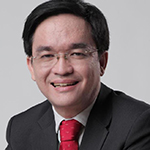 For several weeks in August, it was extremely tiresome to go for meetings in Quezon City or Pasig from my residence in Makati. Like many folks in Metro Manila, I have had to cope with horrible traffic especially in EDSA.
For several weeks in August, it was extremely tiresome to go for meetings in Quezon City or Pasig from my residence in Makati. Like many folks in Metro Manila, I have had to cope with horrible traffic especially in EDSA. 

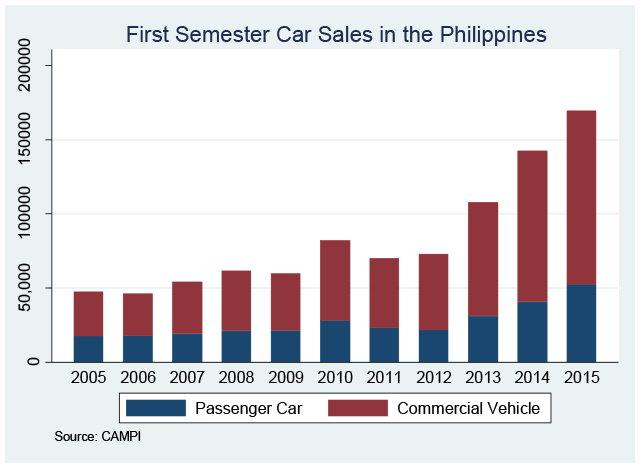

 They don't tell you when you leave the homeland what you'll actually miss. You're told what you'll supposedly gain – a better life, more freedom, and the ability to buy nice things. Wide open spaces, the reliability of service, the openness of city streets.
They don't tell you when you leave the homeland what you'll actually miss. You're told what you'll supposedly gain – a better life, more freedom, and the ability to buy nice things. Wide open spaces, the reliability of service, the openness of city streets. 
 “Why are you smiling? What are you listening to?” were my family’s words when they looked at me with curious and concerned eyes, wondering why I was laughing on my own or smiling at nothing.
“Why are you smiling? What are you listening to?” were my family’s words when they looked at me with curious and concerned eyes, wondering why I was laughing on my own or smiling at nothing. 
 Like reading the ancient Greek tragedy of Homer, we are at the pages of the Iliad where we can see what hell ahead shall befall Troy. We are now in that exact moment, seeing in the horizon the fires that will burn for 10 years. However, we are not looking in the horizon of the ill-fated Trojans, but rather, we are looking at the future of humanity, nature, and the planet.
Like reading the ancient Greek tragedy of Homer, we are at the pages of the Iliad where we can see what hell ahead shall befall Troy. We are now in that exact moment, seeing in the horizon the fires that will burn for 10 years. However, we are not looking in the horizon of the ill-fated Trojans, but rather, we are looking at the future of humanity, nature, and the planet. 






 Here's a secret: "Working hard" or "studying hard" isn't the solution to poverty or otherwise unfortunate circumstances. It's privilege.
Here's a secret: "Working hard" or "studying hard" isn't the solution to poverty or otherwise unfortunate circumstances. It's privilege.
 C. is sitting in her house, anemic, tired-looking, and emaciated. Her 3 malnourished children, a 3-year-old song and two-year-old twin daughters, are sleeping, with rashes all over their skin and worms in their bellies. None of them have ever seen a doctor, they are mostly staying at home.
C. is sitting in her house, anemic, tired-looking, and emaciated. Her 3 malnourished children, a 3-year-old song and two-year-old twin daughters, are sleeping, with rashes all over their skin and worms in their bellies. None of them have ever seen a doctor, they are mostly staying at home.



 Dear
Dear 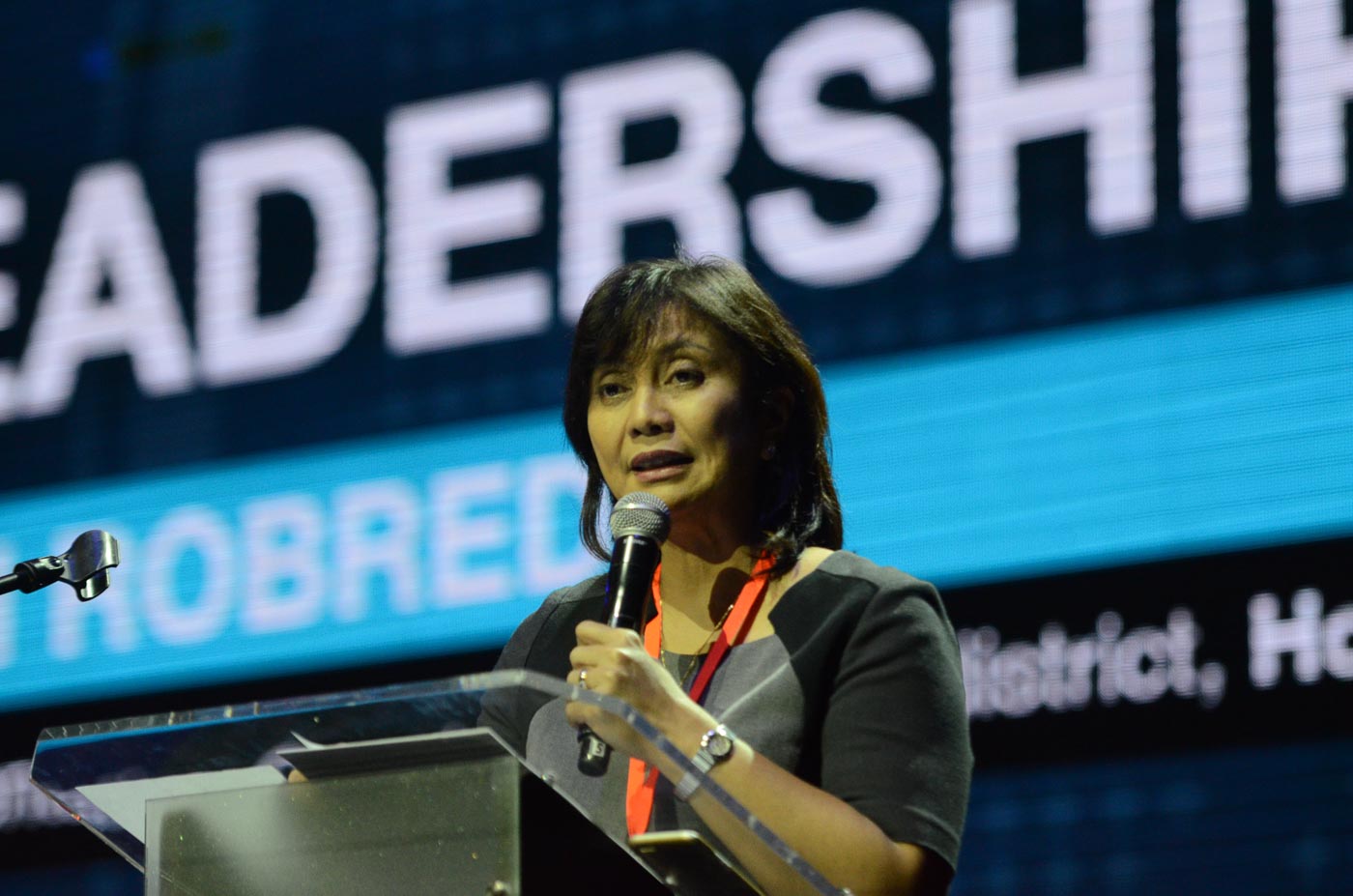
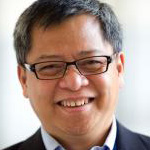 Dear Maneee,
Dear Maneee,




 The Youth Empowerment Summit for the Sustainable Development Goals (#YES4SDG) was held on September 12. I arrived without a clue about what I’d bring home from it. I didn’t come representing any organization, but by invitation from a good friend of mine. I came representing myself as a Filipino youth eager to learn and take action.
The Youth Empowerment Summit for the Sustainable Development Goals (#YES4SDG) was held on September 12. I arrived without a clue about what I’d bring home from it. I didn’t come representing any organization, but by invitation from a good friend of mine. I came representing myself as a Filipino youth eager to learn and take action.
 So, what exactly is “Inclusive Mobility”?
So, what exactly is “Inclusive Mobility”?  "Sige na, matalino ka na." ("Fine, you're the smart one.")
"Sige na, matalino ka na." ("Fine, you're the smart one.")
 Predictably a lot of people went crazy when Senator Miriam Santiago announced that her running mate is Senator Bongbong Marcos.
Predictably a lot of people went crazy when Senator Miriam Santiago announced that her running mate is Senator Bongbong Marcos. 